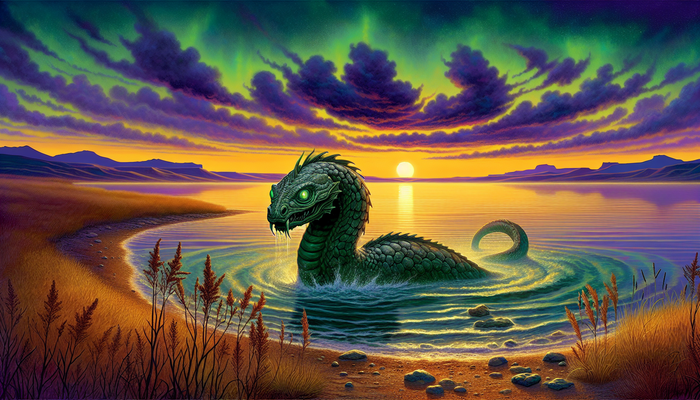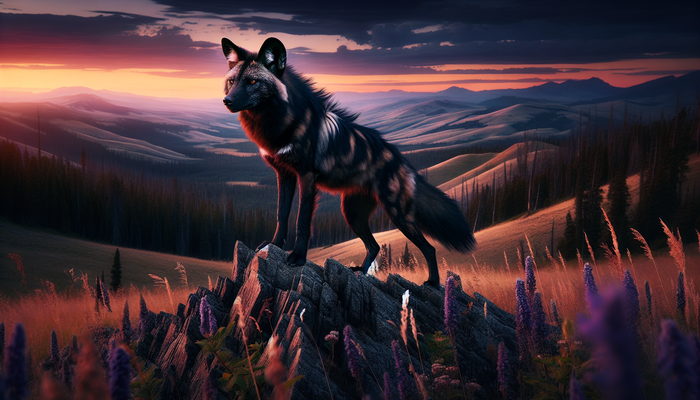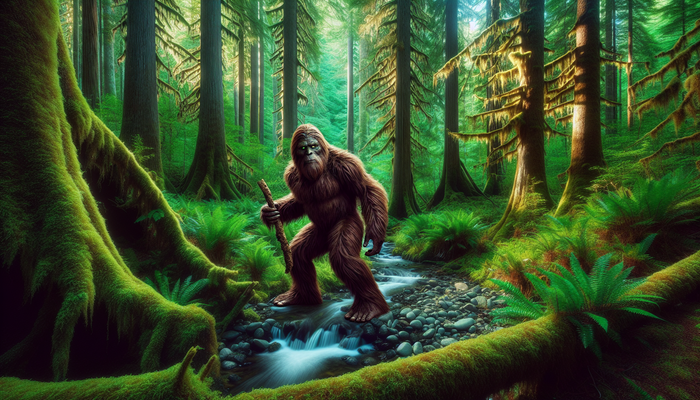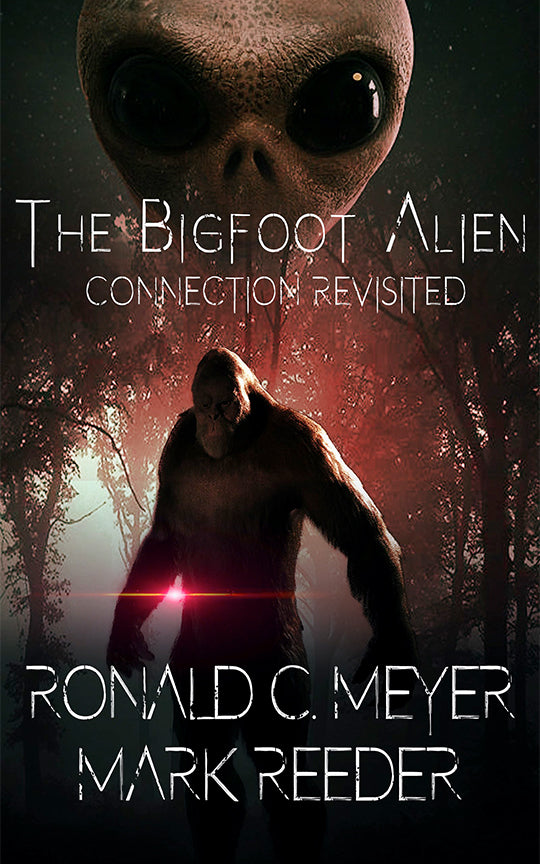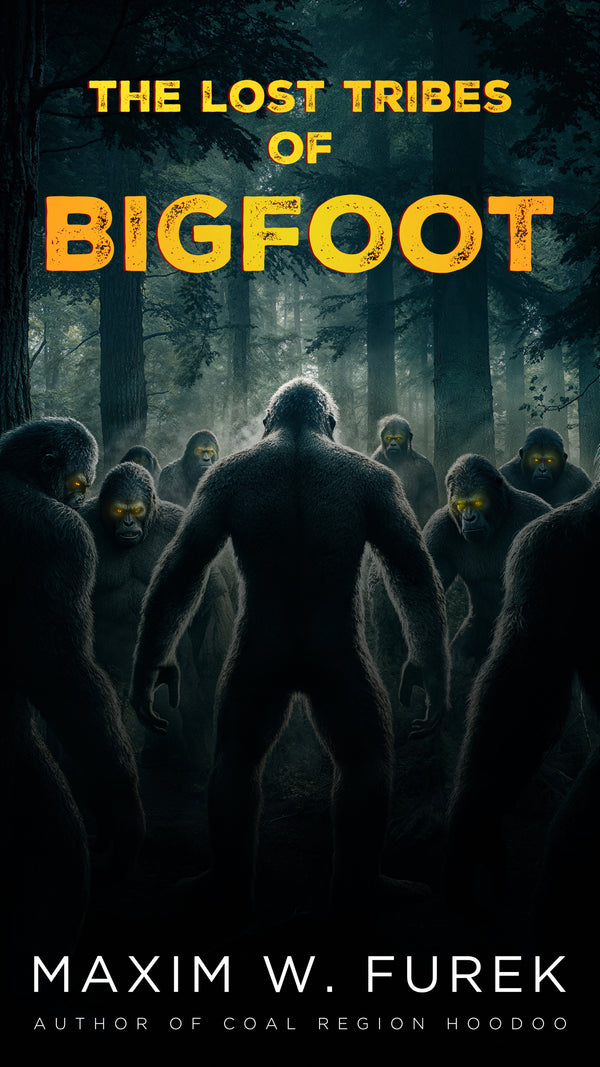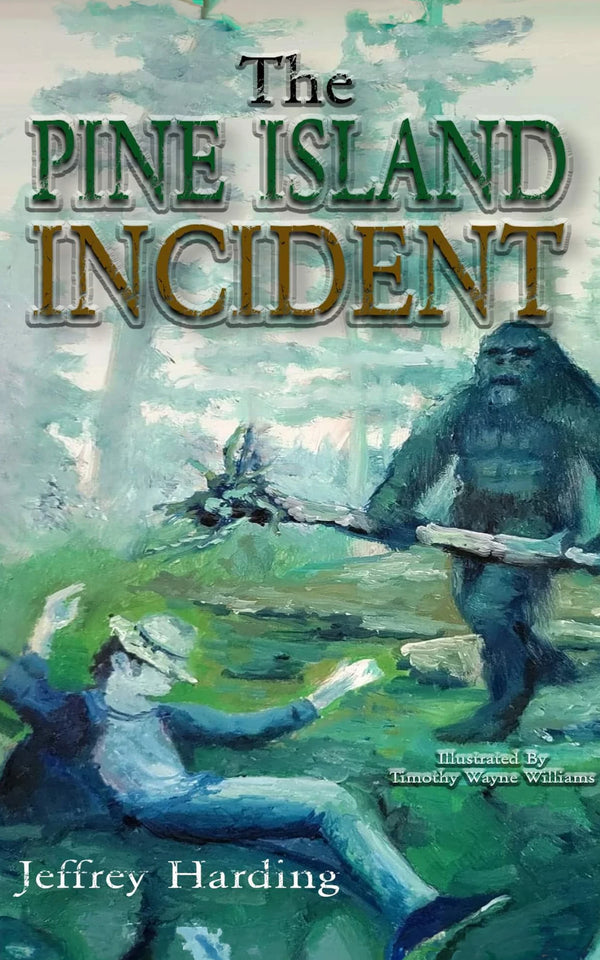Exploring Bigfoot in Children's Literature: Myths, Adventures, and Lessons
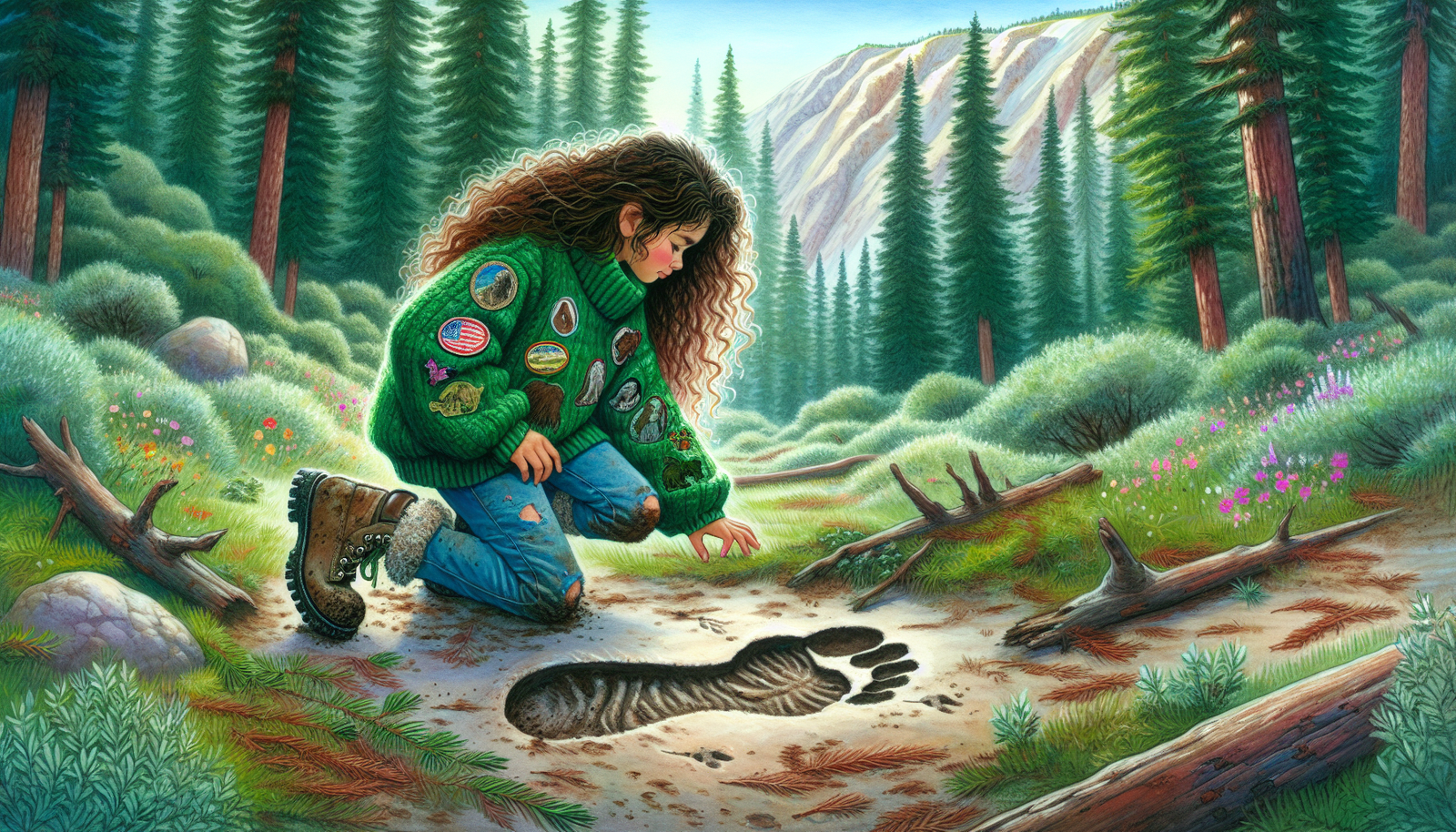
By Oliver Bennett, Cryptozoologist
The Allure of Bigfoot in Children's Literature
In the realm of children's literature, few figures capture the imagination quite like Bigfoot. This elusive creature, also known as Sasquatch, has stomped its way from the depths of folklore into the hearts of young readers, leaving behind a trail of wonder, curiosity, and surprisingly profound life lessons. But what is it about this mythical beast that has authors, illustrators, and children alike so captivated?
Bigfoot's allure lies in its perfect blend of mystery and possibility. It's a creature that exists in the shadowy corners of our world, just beyond the reach of definitive proof. For children, Bigfoot represents the unknown, the unexplored, and the potential for discovery that lurks in every forest and behind every tree. It's this tantalizing mix of the familiar and the fantastic that makes Bigfoot stories so irresistible to young minds.
Take, for instance, the way Bigfoot stories often unfold in settings that children can relate to – the woods behind their house, a family camping trip, or a hike in the mountains. These everyday backdrops suddenly become landscapes of endless possibility when Bigfoot enters the scene. It's as if the stories whisper to children, "Adventure isn't just in far-off lands; it could be right in your backyard!"
But Bigfoot's appeal goes beyond mere adventure. These stories often serve as a bridge between the real world and the realm of imagination. They encourage children to question, to wonder, and to consider possibilities beyond their everyday experiences. In a world where children are increasingly bombarded with information and expected to grow up quickly, Bigfoot stories offer a refreshing invitation to embrace mystery and cultivate a sense of wonder.
Notable Bigfoot Books for Young Readers
Let's trek through the literary forest and examine some of the standout Bigfoot books that have left their mark on young readers.
"Bigfoot Mountain" by Roderick O'Grady
"Bigfoot Mountain" by Roderick O'Grady is a poignant tale that intertwines the search for Bigfoot with a young girl's journey through grief. The protagonist, Minnie, is grappling with the loss of her mother when she stumbles upon mysterious footprints in the forest. O'Grady's narrative is a masterclass in using the Bigfoot myth as a vehicle for exploring deeper emotional themes.
The book's strength lies in its ability to address loss and healing through the lens of a Bigfoot adventure. As Minnie follows the trail of the elusive creature, she's also navigating her own path through grief. It's a beautiful metaphor that resonates with young readers who might be dealing with their own losses or changes in life.
What's particularly striking about "Bigfoot Mountain" is how it uses the natural world as a character in its own right. The forest becomes a place of solace and discovery for Minnie, mirroring the way many children find comfort and excitement in nature. This connection to the environment is a recurring theme in Bigfoot literature, often serving as a gentle reminder of our place in the natural world.
"The Littlest Bigfoot" by Jennifer Weiner
Shifting gears, we find "The Littlest Bigfoot" by Jennifer Weiner, a book that turns the Bigfoot narrative on its head. Here, we meet Alice, a human girl who feels out of place in her world, and Millie, a young Bigfoot who dreams of human adventures. Weiner's story is a delightful exploration of friendship, acceptance, and the search for belonging.
What sets "The Littlest Bigfoot" apart is its focus on body image and self-acceptance. Alice, with her wild hair and larger frame, feels like an outsider among humans. Millie, despite being a Bigfoot, is considered small and odd by her tribe. Their friendship becomes a celebration of differences and a powerful message about embracing one's unique qualities.
Weiner's book tackles these weighty themes with a light touch and plenty of humor. It's a prime example of how Bigfoot stories can address serious issues in a way that's accessible and engaging for young readers. The book's success lies in its ability to make children laugh while also encouraging them to think about acceptance and self-love.
"Big Foot and Little Foot" Series by Ellen Potter
For younger readers, the "Big Foot and Little Foot" series by Ellen Potter offers a charming introduction to the world of Bigfoot. The series follows Hugo, a young Sasquatch, and Boone, a human boy, as they become unlikely friends and embark on various adventures.
Potter's series is a masterclass in using the Bigfoot myth to explore themes of curiosity and acceptance. Hugo and Boone's friendship serves as a gentle reminder that differences can be a source of strength and learning, rather than division. The books are filled with humor and heart, making them perfect for children just starting to read chapter books.
What's particularly noteworthy about this series is how it portrays the Sasquatch community. Potter has created a rich, imaginative world for her Sasquatch characters, complete with their own customs, foods, and ways of life. This attention to detail not only makes the stories more engaging but also encourages young readers to think about different cultures and ways of living.
"The Search for Sasquatch" by Laura Krantz
For those looking for a more scientific approach to the Bigfoot legend, "The Search for Sasquatch" by Laura Krantz offers a fascinating blend of folklore and fact. Aimed at middle-grade readers, this book takes a journalistic approach to the Bigfoot phenomenon, examining evidence, interviewing experts, and exploring the science behind the myth.
Krantz's book is a standout in the Bigfoot genre because it encourages critical thinking and scientific inquiry. It doesn't set out to prove or disprove Bigfoot's existence, but rather to explore the methods we use to investigate such claims. For young readers, it's an excellent introduction to concepts like evidence evaluation, scientific method, and the importance of keeping an open, yet critical mind.
What's particularly impressive about "The Search for Sasquatch" is how it balances skepticism with wonder. Krantz doesn't dismiss Bigfoot stories outright but instead uses them as a jumping-off point for broader discussions about biology, ecology, and even human psychology. It's a book that satisfies curiosity while also sparking new questions – a hallmark of great science writing for children.
"Don't Squash the Sasquatch" by Kent Redeker
On the lighter side of the Bigfoot literary spectrum, we find books like "Don't Squash the Sasquatch" by Kent Redeker. This playful picture book follows the adventures of Señor Sasquatch as he navigates a world much too small for his large frame. It's a riot of silliness and wordplay that never fails to elicit giggles from young readers.
But beneath the laughter, Redeker's book touches on themes of inclusion and acceptance. Señor Sasquatch's struggles to fit in (quite literally) mirror the experiences many children have when they feel out of place. The book's message of making room for everyone, no matter their size or shape, is delivered with a light touch that never feels preachy.
What's particularly clever about "Don't Squash the Sasquatch" is how it uses the Bigfoot character to flip the script on size and power dynamics. In most stories, Bigfoot is an intimidating presence. Here, he's vulnerable and in need of help, teaching children that even the biggest and strongest among us sometimes need a helping hand.
Common Themes in Bigfoot Literature
As we trek deeper into the forest of Bigfoot literature, we begin to see common themes emerging from the underbrush. These books, diverse as they are, share certain elements that make them particularly resonant with young readers.
Friendship and Acceptance
Friendship and acceptance are at the heart of many Bigfoot tales. Whether it's the unlikely bond between a human and a Sasquatch or the camaraderie among a group of cryptid hunters, these stories emphasize the importance of looking beyond surface differences. They teach children that friendship can bloom in the most unexpected places and that understanding and empathy are key to building relationships.
Take, for example, the friendship between Hugo and Boone in the "Big Foot and Little Foot" series. Their relationship isn't just about two individuals from different species becoming friends; it's about bridging entire worlds. Through their adventures, young readers learn valuable lessons about cultural exchange, mutual respect, and the joy of discovering common ground with someone who seems entirely different from you.
This theme of acceptance extends beyond just friendship. Many Bigfoot books tackle issues of self-acceptance and body positivity. In a world where children are bombarded with unrealistic beauty standards, stories about a creature that's unabashedly big, hairy, and different can be surprisingly empowering. They send a powerful message: you don't have to fit in to be amazing.
Connection to Nature and Environmental Awareness
Another prevalent theme in Bigfoot literature is the connection to nature and environmental awareness. Bigfoot, as a creature of the wilderness, often serves as a symbol of the natural world. Through Bigfoot stories, children are encouraged to explore, appreciate, and protect the environment.
"Bigfoot Goes Hiking to a Mountain Lake" by Melissa A. Maestas is a prime example of this. The book not only follows Bigfoot on an outdoor adventure but also subtly educates readers about the flora and fauna of the forest. It's a clever way of fostering a love for nature and encouraging children to become stewards of the environment.
This environmental theme is particularly relevant in today's world, where children are increasingly disconnected from nature. Bigfoot stories can serve as a gentle nudge, reminding young readers of the wonders that await them outside their doors and screens. They inspire a sense of curiosity about the natural world and can be a first step in developing a lifelong appreciation for the environment.
Belief and Skepticism
Belief and skepticism form another fascinating dichotomy in Bigfoot literature. Many of these books walk a fine line between encouraging imagination and promoting critical thinking. They often present evidence for and against Bigfoot's existence, allowing young readers to draw their own conclusions.
This approach is exemplified in "The Search for Sasquatch" by Laura Krantz. The book doesn't definitively state whether Bigfoot is real or not. Instead, it presents the available evidence and encourages readers to think critically about what they're seeing and hearing. It's an excellent introduction to scientific thinking, teaching children how to evaluate claims and evidence.
This balance of belief and skepticism is crucial in today's information-saturated world. Bigfoot stories can serve as a safe space for children to practice these skills of critical analysis. They learn to question, to look for evidence, and to keep an open mind – all while enjoying a thrilling story about a mysterious creature.
Courage and Self-Discovery
Courage and self-discovery are also common threads running through many Bigfoot tales. Often, the human characters in these stories must overcome their fears – whether it's fear of the unknown, fear of not fitting in, or fear of failure – in order to solve the mystery or help their Sasquatch friends.
In "The Boy Who Cried Bigfoot" by Scott Magoon, the protagonist learns valuable lessons about honesty and the consequences of lying. But beneath this moral tale is a story about a boy finding the courage to tell the truth, even when it's difficult. It's a journey of self-discovery that many young readers can relate to.
These stories of personal growth and courage are particularly important for children navigating the often-turbulent waters of growing up. They provide relatable characters facing challenges and overcoming them, offering inspiration and reassurance to young readers facing their own obstacles.
Humor
Humor plays a significant role in many Bigfoot books for children. From silly situations to wordplay and visual gags, these stories use humor to engage young readers and make complex themes more accessible. The laughter serves not just as entertainment, but as a tool for learning and emotional connection.
"Don't Squash the Sasquatch" is a perfect example of how humor can be used to address serious topics. The book's silly premise and playful language make it a joy to read, but underneath the giggles is a meaningful message about inclusion and kindness. The humor serves as a spoonful of sugar, helping the moral of the story go down in a most delightful way.
This use of humor is particularly effective with younger readers. It keeps them engaged with the story while subtly introducing more complex ideas. It also helps to demystify the often-scary concept of a large, unknown creature, making Bigfoot more approachable and relatable.
The Impact of Bigfoot Literature on Young Readers
The impact of Bigfoot literature on young readers extends far beyond simple entertainment. These books serve as powerful tools for developing critical thinking skills, fostering empathy, promoting environmental stewardship, building confidence, and nurturing a sense of wonder about the world.
By encouraging children to evaluate evidence and form their own conclusions about Bigfoot's existence, these books are teaching valuable lessons in critical thinking. They show that it's okay to question, to be curious, and to change your mind when presented with new information. In a world where misinformation is rampant, these skills are more important than ever.
Bigfoot stories also play a crucial role in fostering empathy and understanding. Through tales of unlikely friendships and acceptance of differences, children learn to see beyond surface-level distinctions and connect with others on a deeper level. This is particularly important in our increasingly diverse world, where the ability to understand and appreciate different perspectives is a vital skill.
The environmental themes in many Bigfoot books serve to instill a sense of responsibility for the natural world. By portraying Bigfoot as a guardian of the forest or by setting adventures in beautiful natural settings, these stories encourage children to develop a personal connection with nature. This early exposure can lead to a lifelong commitment to environmental stewardship.
Perhaps most importantly, Bigfoot literature helps to build confidence and resilience in young readers. Whether it's characters overcoming their fears to befriend a Sasquatch or persevering in their search for evidence, these stories provide models of courage and determination. They show children that it's okay to be different, to face challenges, and to keep trying even when things get tough.
Finally, Bigfoot stories play a crucial role in nurturing a sense of wonder about the world. In an age where information is at our fingertips and mystery seems in short supply, these tales remind children that there's still magic and mystery in the world. They encourage imagination, creativity, and a lifelong love of learning and exploration.
Conclusion
Bigfoot's footprints in children's literature are deep and lasting. From fostering a love of nature to encouraging critical thinking, from promoting empathy to building confidence, these stories offer far more than just entertainment. They provide valuable life lessons wrapped in the fuzzy, mysterious package of a legendary creature.
As we've seen, Bigfoot is more than just a mythical beast lurking in the woods. In the pages of children's books, it becomes a powerful symbol of the unknown, a catalyst for personal growth, and a bridge between the real world and the realms of imagination. Whether portrayed as a gentle giant, a misunderstood creature, or an elusive mystery, Bigfoot continues to capture the hearts and minds of young readers.
The enduring popularity of Bigfoot in children's literature speaks to the timeless appeal of mystery and adventure. In a world that sometimes seems to have all the answers, these stories remind us of the joy of questioning, of exploring, and of believing in the possibility of the extraordinary.
So the next time you hear a rustle in the bushes or spot an unusually large footprint in the mud, remember: it might just be the beginning of a great adventure. And isn't that what childhood – and great children's literature – is all about?
From Bigfoot to UFOs: Hangar 1 Publishing Has You Covered!
Explore Untold Stories: Venture into the world of UFOs, cryptids, Bigfoot, and beyond. Every story is a journey into the extraordinary.
Immersive Book Technology: Experience real videos, sights, and sounds within our books. Its not just reading; its an adventure.


